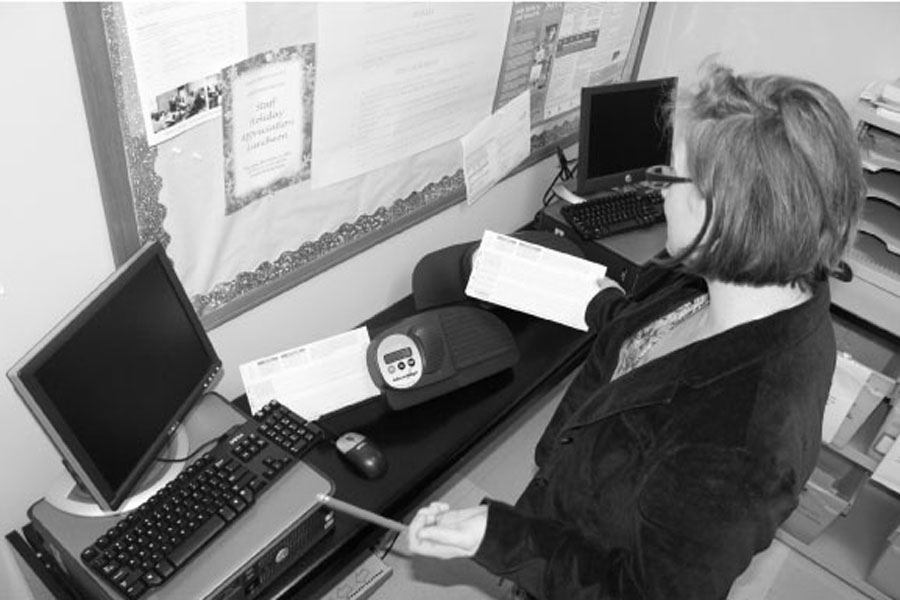It’s a hallmark of the test-taking experience; an established figure in the lives of Staples students; a perpetual convenience to teachers. Indeed, the Scantron has an unquestionable omnipresence at Staples.
In fact, according to Principal John Dodig, Staples spends more than $5,000 a year on Scantron score sheets.
“We get less money every year to run the schools,” Dodig said. “When I saw that we spend so much money on Scantrons, I said, ‘Do we really need to be spending that much?’”
At a recent meeting, Dodig asked the administrative staff for strategies on reducing Scantron spending. The prospect of reusing the score sheets was suggested.
When a Scantron is used for a test that has fewer questions than there are available answer spaces, it is possible to reuse the score sheet. A separate program renumbers the questions so that “Question One” corresponds with the first question of the quiz, regardless of where the assessment actually begins on the answer sheet.
James D’Amico, the social studies department coordinator for grades 6-12, was present at a recent meeting of administrators, and later suggested to the entire social studies department that they try to use this cost-effective method.
“There’s really no reason not to,” D’Amico said.
Meanwhile, physics teacher Robert Andrew said he has been reusing Scantrons for years. He finds it to be convenient for the way he instructs his classes.
“I give a lot of quizzes that just have a few questions on them. If I didn’t reuse Scantrons, I’d be using a lot of them,” Andrew said.
For Andrew, using Scantrons works conveniently with his online gradebook on JupiterGrades.com. However, with next semester’s school-wide requirement of using eSchool as gradebooks, Andrew believes that reusing Scantrons to this degree will no longer be plausible.
Social studies teacher Joe Jelen has implemented a comparably economical method of grading by using GradeCam.com. The website allows teachers to print out bubble sheets similar to Scantrons, which can be graded instantly by using an Optical Mark Recognition technology similar to Scantron machines. All one has to do is simply hold the sheets up to a webcam or document scanner.
Claire Noyer ’14, a student of Jelen’s, sees GradeCam.com as immediately gratifying.
“It’s nice because you get your grade that day,” Noyer said. “Even with a huge unit test, you can have your grade in a matter of seconds.”
However, while GradeCam.com allows score sheets to be printed for free, the website has recently started to charge customers for membership, making it, ultimately less cost-effective. Still, teachers such as Jelen and Andrew are finding new ways to grade tests.
For example, in an effort to promote discussion in his classes, Andrew provides his students with scratch-off answer sheets to be completed in groups. Students work together to come up with an answer, and then scratch off the corresponding bubble.
“If you scratch off the right answer, you get a star,” Andrew said.
Jelen, though, believes the future of test administration at Staples may lie in the recently acquired Google Apps system.
“I believe students will be taking more and more assessments on a computer in their academic careers,” said Jelen, who expressed hope that Staples will move towards computer services for testing, such as Google Forms. “I believe test forms are a thing of the past.”














































